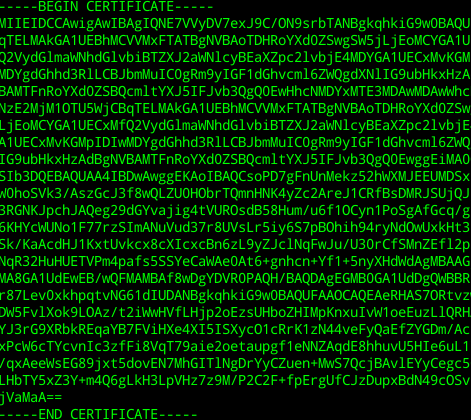Just in time for Christmas, the 3.7 Linux kernel was released on December 10, 2012, and brings with it 64-bit ARM support plus a multitude of improvements and changes. The main changes are:
-
ARM Multi-platform and 64-bit support
-
TCP Fast Open Server Side support
-
SMB2 protocol support
-
NFS V4.1 support
-
BtrFS updates
-
VXLAN support
-
perf trace
-
Cryptographically-signed kernel modules
-
Intel “Supervisor mode access prevention” (SMAP) support
The big news is Linux 3.7 will support multiple ARM platforms in the base kernel. This will be a completely redone 64-bit ARM support, instead of simple extensions to the 32-bit architecture. The new version will allow Linux to boot and run on multiple ARM devices without having to have seperate kernels for each device. This should make developers happy and save them a great deal of time and trouble, as they will no longer have to develop seperate kernels for each project.
 The Raspberry Pi is an ARM device
The Raspberry Pi is an ARM device
TCP Fast Open server side support has been added. This will allow the elimination of one roundtrip from some TCP connections and should improve webpage openings by 4-40%. This performance improvement will make a lot of website and network administrators very happy.
For administrators who have Windows PCs on their network, the SMB2 protocol has been added and is supported. SMB2 is the sucessor to the SMB/CIFS file system protocol. The improved scalability and performance enhancements will make this a much more stable file system protocol. The inclusion of this protocol will allow your SAMBA servers to deliver files to Windows PCs faster and will allow for support of newer versions of Windows OS.
NFS V4.1 is no longer considered expermental and is fully supported along side NFS. The main feature of NFS V4.1 is Parallel NFS (pNFS). pNFS will take advantage of clustered server deployments and allow scalable parallel access to a given filesystem, or individual files to be distributed among multiple servers.
Multiple updates to BtrFS have been added, including removal of the hard link limits inside a single directory. A new release of ‘fsync’ will improve performance. BtrFS now has the ability to deallocate a range of space in a file. EXT4 can now resize on volumes of more than 16TB in size.
On the networking side we have VXLAN, and multiple IPv6 improvements. VXLAN is used to tunnel virtual network infrastructure in virtualized environments using the UDP protocol. VXLAN will provide layer 2 abstraction for virtual machines, and support for NAT with IPV6 has been included.
A new debugging tool, perf trace, has been added, which is modeled after strace. Its purpose is to make tracing kernel events for debugging easier, and will show the events associated with the target. Initially only system calls are traced, but other system events like pagefaults, task lifetime events and scheduling events will be added. Perf trace is still in its early versions, so it only works in a live mode and does not record events.
Cryptographically-signed kernel modules are allowed with this release. The kernel can optionally disable completely the load of modules that have not been signed with the correct key. This feature is useful for security purposes, as an attacker who gains root access will not be able to install a rootkit.
 Kernel modules can be cryptographically signed
Kernel modules can be cryptographically signed
Supervisor Mode Access Prevention (SMAP) is a new security feature in revision 014 of the Intel architecture. When SAMP is active the kernel cannot normally access pages that are under user space. Sometimes the kernel might need to access these pages, so an override is provided for the kernel to access these pages.
Other improvements include iPhone5 support for the ipeth tethering driver, the Wii remote driver, ‘wiiremote’ now supports the Wii Balance-Board, and there is now HID support for the Sony PS3 Blu-ray disk remote contol. There are major improvements to the Nouveau graphics drivers The Radeon graphics driver will now allow the AMD cores to manage more than two monitors.
Some of these improvements will improve the Linux user’s experience on home and multimedia PCs. The added BtrFS optimizations and SMB2 support are likely to appeal to systems administrators, while the TCP fast open improvements will appeal to the web administrators. The inclusion of ARM support is the most important improvement and will appeal to the developors of pocket PC, tablets and smartphones and smaller more mobile devices.
Image credits:
Raspberry Pi courtesy Wikimedia Commons, Creative CommonsAttribution 2.0 Generic


